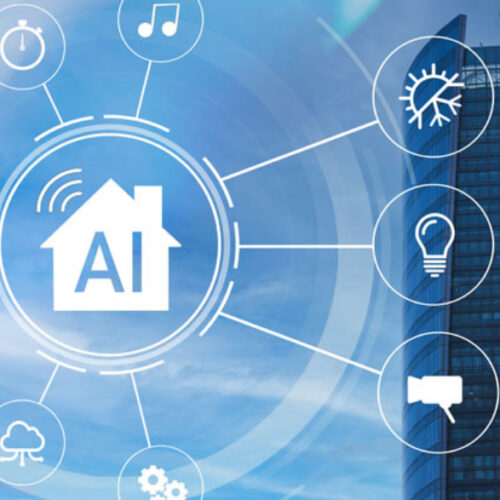
Although healthcare facilities are known for going above and beyond when it comes to indoor air quality (IAQ), improving IAQ has taken on a whole new level of importance for every type of facility since the 2020 global pandemic.
For many companies, acceptable indoor air quality is paramount, not only for the comfort of building occupants, but also for their health and safety.
Of course, there are precedents for achieving this level of air quality, namely ASHRAE 62.1-2019. This long-held standard specifies, among other things, minimum ventilation rates for both new and existing buildings. Its intent? To ensure acceptable indoor air quality for humans so as to minimize the potential for adverse health effects.
Achieving and maintaining acceptable IAQ is, perhaps, more complex than you might think. It’s dependent upon an entire ecosystem of strategies, tactics, and technologies. So, we’ve put together this guide to help you understand more about indoor air quality—including how you can leverage the Industrial Internet of Things (IIoT) for filtration and ventilation.
What Is Indoor Air Quality [and Why Does It Matter]?
The Environmental Protection Agency (EPA) defines IAQ as:
“… the air quality within and around buildings and structures, especially as it relates to the health and comfort of building occupants.”
On its Introduction to Indoor Air Quality resources page on epa.gov, the EPA says airborne contaminants, pollutants, and particles have the potential to cause both short- and long-term human health effects, including sneezing, shortness of breath, lethargy, cancer, and more.
These contaminants, pollutants, and particles include but are not limited to:
- Asbestos
- Bacteria
- Carbon Monoxide
- Chemicals
- Dust
- Emissions
- Gases
- Pesticides
- Viruses
- Volatile Organic Compounds (VOCs)
All this to say that experts, including the EPA, contend that certain indoor air pollution can be a costly environmental health problem that can result in tens of billions of dollars lost annually due to decreased productivity and increased medical expenses.
4 Steps to Improving Indoor Air Quality
According to the EPA, Americans spend up to 90% of their time indoors, including time spent in a commercial building, retail environment, or office space.
Based on this information alone, if you’re a building owner, facility manager, engineer, architect, or otherwise engaged in facility construction and maintenance, you may want to consider taking steps to achieve and maintain acceptable IAQ.
Here are some of the key steps to get you started.
Step 1: Minimize Exposure Barriers
Entry and exit doors. Lobbies. Elevators. Conference rooms.
Every facility has its share of potential logjams. These places are typically where groups of people remain in close proximity for a period of time, which can increase the likelihood of unhealthy airborne particles and pollutants.
Certain building or interior space designs can be used to minimize exposure. Creating a physical barrier between occupants and the source of contamination is another option. That barrier can be a wall, partition, mask, or some other impediment, depending on what you think could be effective to eliminate or control human exposure.
For more information on using barriers to limit contamination sources, visit the EPA’s website where you’ll find free resources, including an air quality guide for building owners and facilities managers.
Step 2: Dilute Pollutants Ventilation
Another step you can take to achieve acceptable IAQ is to optimize building or facility airflow with ventilation. Ventilation simply means bringing fresh outdoor air to the indoors and circulating it to help dilute the concentration of potentially harmful pollutants and particulates.
While some buildings may allow for occupants to open windows to let fresh air in, others may not. Open windows, alone, may not be enough of a solution anyway. Besides, opening a window doesn’t necessarily allow you or your facilities staff to control the amount of fresh air intake in order to maintain compliance with IAQ standards.
But, thanks to new technologies, there is something that can help: data-driven ventilation.
Thanks to Cloud-enabled systems and IoT devices connected to Building Automation Systems (BAS), building owners, equipment managers, and facilities personnel like you can monitor and manage how much outside air comes into your building.
Known as smart building automation, this advanced technology-based solution can provide you with analytics; enable anywhere, anytime ventilation adjustments; and deliver real-time, remote notifications to you and your designated team members.
Step 3: Clean the Air Filtration
By now you’ve probably recognized that it can take a layered approach to achieve compliance with acceptable indoor air quality standards. Which is why, in addition to barriers and ventilation, building owners and facility managers might want to consider a filtration solution that can help clean the air of the specific particulate matter or potential contaminates germane to the area.
For guidance on types of filters, minimum filter efficiencies, and much more, you might benefit from hospital best practices, outlined in ASHRAE 170-2013 – Ventilation of Health Care Facilities. The full standard is available for purchase from ASHRAE’s online standards and guidelines database.
Step 4: Take Control of IAQ Levels Connectivity
Today’s modern HVAC systems are designed for helping to optimize indoor air quality, maintain occupant well-being and comfort, and minimize unnecessary energy consumption.
As part of a multi-layered approach to managing IAQ, consider whether your HVAC systems are working as intended. But how can you know for sure?
That’s where Cloud-enabled HVAC systems and connected devices can help.
By connecting your HVAC systems and related devices to the Cloud, you’re empowered to better manage your systems. As we always say around here: You can’t manage what you don’t measure.
With a connected system, you can take proactive control of your indoor air quality. And that starts with gathering data from connected devices, giving you actionable insights to make important air quality decisions and to keep the air safe for all of your building occupants.
Curious about how a connected system works to improve IAQ? Here’s a practical yet powerful example:
Imagine you’re in charge of a multi-site campus. You’ve done your due diligence and equipped all the buildings with the appropriate type, number, and location of air filters. Air filters, as you know, are helpful in blocking particulates and other matter.
So, when they do what they’re designed to do, you can expect these air filters to get dirty. Keep in mind that dirty air filters mean less air flow, and less air flow means the potential for unacceptable IAQ.
In order to maintain occupant comfort, IAQ compliance, and HVAC efficiency, you’ll need to make sure that dirty air filters are changed out on a regular basis.
Without a connected system, that means you’ll likely have to dispatch a maintenance crew to physically travel to each location, examine the filters to determine which ones need replacement, and then change out the dirty filters for clean ones.
But, if you have a connected IoT system, you have technology at your fingertips—technology that’s automatically and continuously monitoring airflow. And, with alerts enabled, any measurement that drops below a threshold that you’ve specified will trigger an alarm, letting you know of the airflow change. Then and only then will you need to decide whether to send someone out to swap the filters. This means you’ll be able to maintain air quality at acceptable levels without disruption, while saving on both maintenance and energy costs.
Innovations in Indoor Air Quality
Of course, there’s a lot more that goes into developing and implementing a compliant IAQ strategy. So, if you’re looking for more information, good news!
Healthy buildings and IAQ are taking center stage at this year’s premier HVAC show, the AHR Expo 2024 in Chicago, January 22-24, 2024.
We’ll be there in Booth S6536 supporting healthy building initiatives through IIoT devices and connected solutions, so be sure to stop and see us.
If you can’t wait to see us at the show or won’t be in attendance, reach out now to learn more about data-driven insights that can radically change the way you monitor and manage your indoor air quality.







